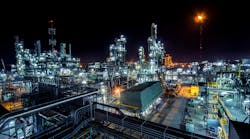New research suggests that methane emissions from the natural gas industry are much higher than previously thought.
Methane is the second most prevalent greenhouse gas emitted in the United States from human activities and it has a greater impact on climate change than carbon dioxide.
It's already known that natural gas production and processing accounts for a significant proportion of methane releases into the atmosphere. The U.S. Environmental Protection Agency (EPA) estimates that nearly one-quarter of methane emissions related to human activities comes from producing, processing and distributing natural gas to millions of homes across the country.
But the American Chemical Society (ACS) notes that this estimate is based on data from 20 years ago and researchers wanted to find out if a more accurate assessment could be made, based on recent changes in the industry and technology.
Allen L. Robinson and colleagues measured facility-level methane emissions at 114 gathering facilities and 16 processing plants in the United States. They found considerable variation in emission levels, with results showing that a small fraction of facilities that collect, process and compress natural gas are responsible for a disproportionately high percentage of methane emissions.
For example, 30 percent of gathering facilities contribute 80 percent of the total emissions.
A report on their findings, published in the ACS journal Environmental Science & Technology, shows that normalized emissions rates are negatively correlated with facility throughput. Differences between inlet and outlet pressure, as well as venting and leaking equipment, were also found to be related to methane emissions. The researchers said that substantial venting from liquids storage tanks was observed at 20 percent of gathering facilities, and emissions rates at these facilities were, on average, around four times the rates observed at similar facilities without substantial venting.
According to the researchers, the EPA's new reporting program does not account for sites that leak or vent large amounts of methane, or some equipment and operating modes that are major sources of the gas. They concluded that the agency could be overlooking almost two-thirds of the methane emissions from the country's natural gas system.


